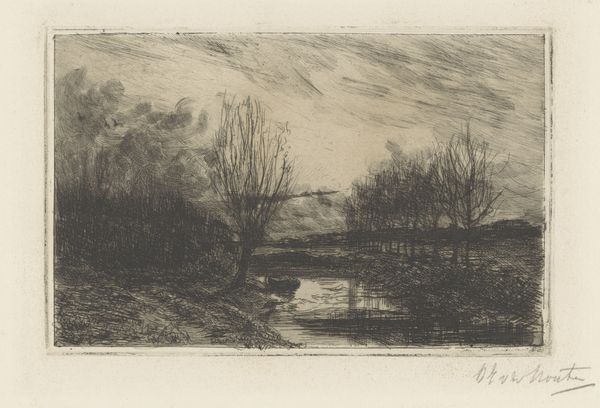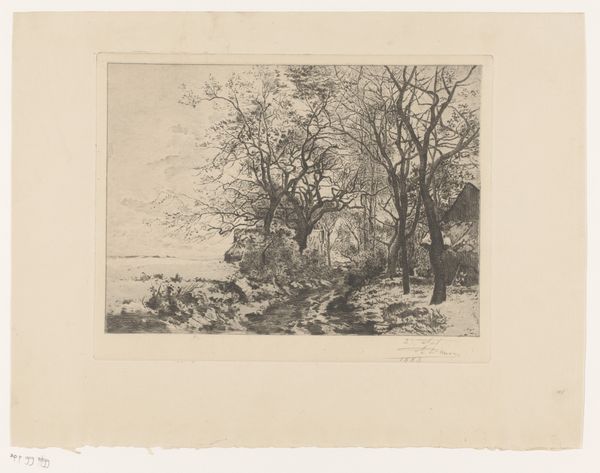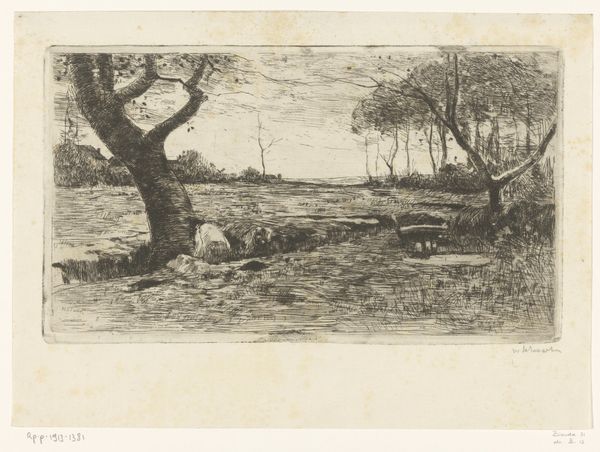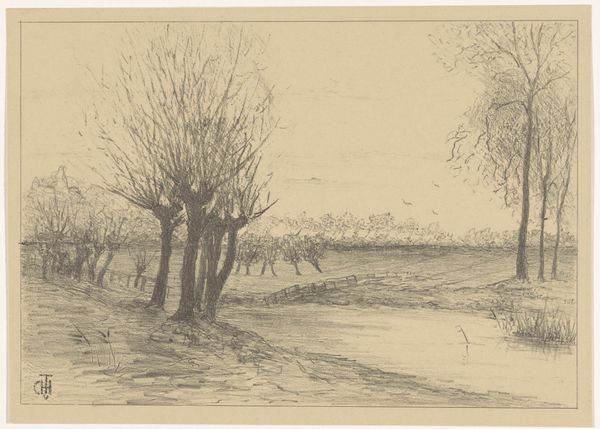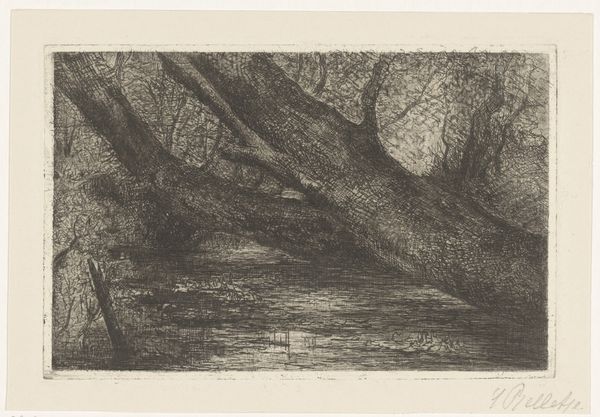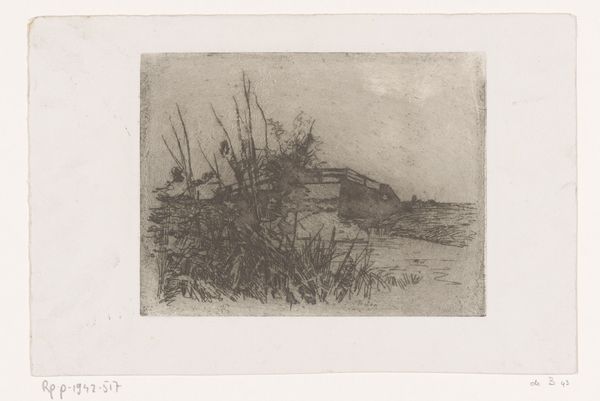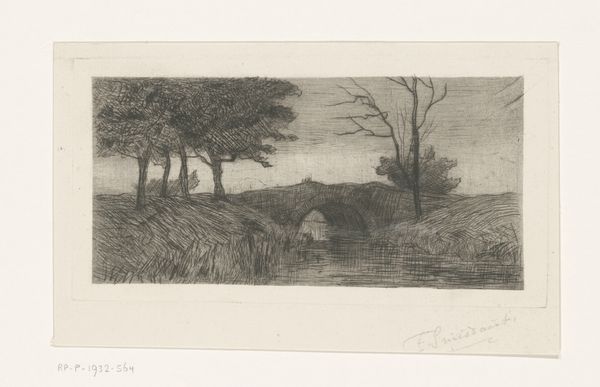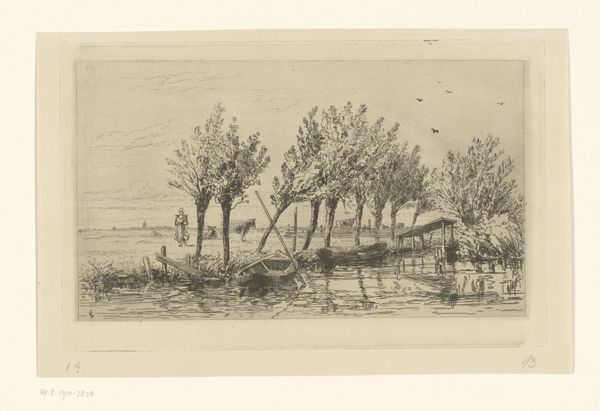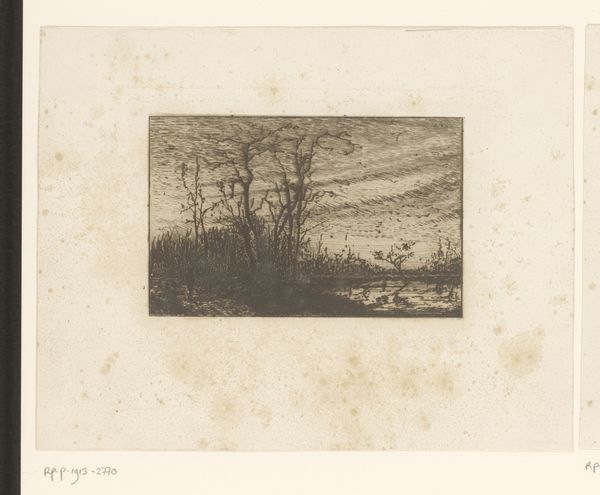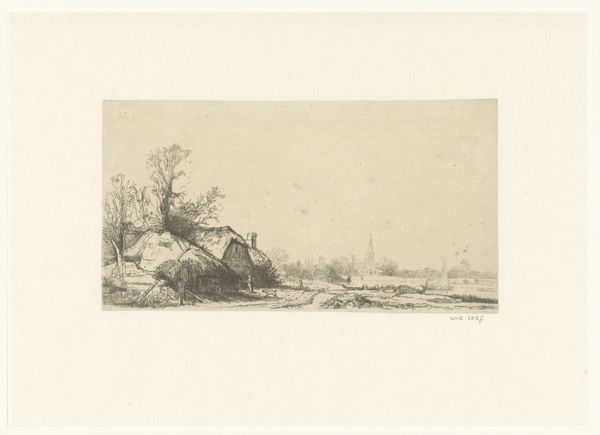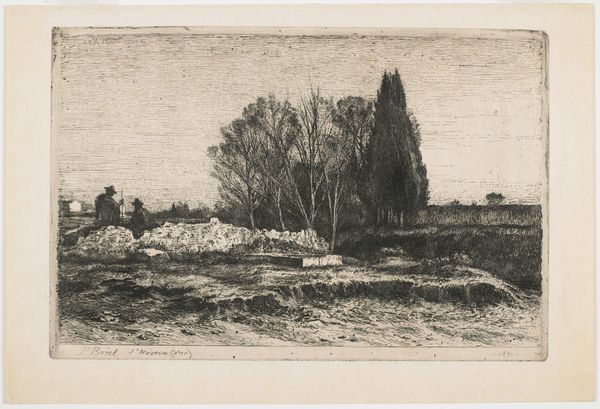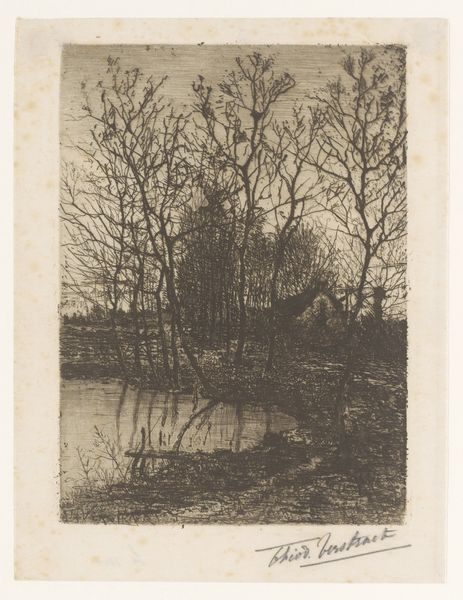
drawing, etching
#
drawing
#
boat
#
dutch-golden-age
#
etching
#
landscape
#
realism
#
monochrome
Dimensions: height 219 mm, width 316 mm
Copyright: Rijks Museum: Open Domain
Curator: Let’s turn our attention to Jan Veth’s “Landscape with Barges in a Ditch near a Canal,” created in 1889 and held at the Rijksmuseum. Editor: Stark. Immediately, I’m struck by its muted tones and the delicate etching work – a landscape reduced to its bare bones, almost desolate in its realism. Curator: That starkness is precisely what I find compelling. Veth was deeply involved in the cultural debates of his time. Notice how he presents a common, working landscape devoid of romantic embellishments. Editor: True. You can almost feel the weight of the materials used to construct those barges; rough-hewn timber and sturdy rope – tangible labor embedded into the scene. The distant windmill hints at the source that fuels that labor. Curator: Precisely. The boats are tools for transporting goods and materials that facilitate life and commerce; they offer a view of the Netherlands’ socio-economic context in the late 19th century. This piece also resonates with Realist tendencies of the time; Veth presented scenes from everyday life rather than historical or mythological narratives, aligning himself with contemporary artists such as Courbet. Editor: And look at the composition itself. Veth has chosen a low vantage point, drawing the viewer into the immediacy of the ditch. It emphasizes the close connection between the population and this waterway, as it teems with implications about how things were manufactured. Curator: And think about how the printmaking process democratized art. Etchings like these made art more accessible beyond the elite, speaking directly to and reflecting the lives of ordinary people. Editor: There’s a strange beauty in the practicality of it all, though. I wonder what kind of skill it took for an artist to handle and manipulate acids and plates to reproduce these textures, these subtle shadows. Curator: Indeed. Veth’s dedication to such realistic detail reveals both artistic skill and commitment to social observation through his artistic practice. Editor: So, what we perceive as ‘stark’ at first glance becomes a study of industrious society etched with purpose and history? Curator: Precisely. An artwork isn't made from nowhere. It's built on the artist, his materials, the art, and even the socio-political context of its creation, as evidenced here.
Comments
No comments
Be the first to comment and join the conversation on the ultimate creative platform.
